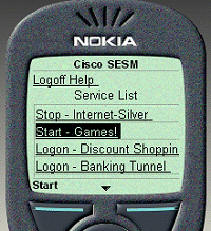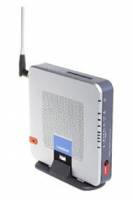WAP, GPRS, HSPDA on the move!
August 2007
 Over the last few months I have written
many posts about Internet technologies but they have been pretty much focussed on terrestrial rather than wireless networks (other than dabbling in Wi-Fi with my overview of The Cloud. -
The Cloud hotspotting the planet). This
exercise was rather interesting as I needed to go back to the beginning and look at how the technologies evolved starting with
The demise of ATM.
Over the last few months I have written
many posts about Internet technologies but they have been pretty much focussed on terrestrial rather than wireless networks (other than dabbling in Wi-Fi with my overview of The Cloud. -
The Cloud hotspotting the planet). This
exercise was rather interesting as I needed to go back to the beginning and look at how the technologies evolved starting with
The demise of ATM.
Back in 1994 a colleague of mine, Gavin Thomas, wrote about Mobile Data protocols and it's interesting to glance back to see how 'crude' mobile data services were at the time. Of course, you would expect that to be the case as GSM Digital Cellular Radio was a pretty new concept at the time as well. In that 1993 post I ended with the statement that "GSM has a bright future". Maybe it should have read " the future is Orange"! No one foresaw in those days the up and coming explosive growth of GSM and mobile phone usage. Certainly n one predicted the surge in use of SMS.
Acronym hell has extended itself to mobile services over the last few years and the market has become littered with three, four and even five letter acronyms. In particular, wireless Internet started with a three letter acronym back in the late 1990s - WAP (Wireless Access Protocol), progressing through a four letter acronym, GPRS (General Packet Radio Service) and Enhanced Data GSM Environment (EDGE) and is now moving to a five letter broadband 3G acronym - HSDPA (High-Speed Downlink Packet Access). Phew!
The history of mobile data services has been littered with undelivered hype over the years that still lives on today. However, that hype led to the development of services that really do work unlike some of the early initiatives like WAP.
Ah, WAP, now that was interesting. I would probably put this at the top of my list of over-hyped protocols of all time. At least when ATM was hyped this only took place within the telecommunications community whereas WAP was hyped to the world's consumers which created much more visibility of 'egg on the face' for mobile operators and manufacturers.
So what was WAP?
 In the late 1990s the world was agog with the
Internet which was accessed using personal computers via LANs or dial-up modems. There was clearly an opportunity (whether it was right or wrong) to bring the 'Internet' to the mobile or cell
phone. I have put quotation marks around the Internet as the mobile industry has never seen the Internet in the same light as PC users - more on this later.
In the late 1990s the world was agog with the
Internet which was accessed using personal computers via LANs or dial-up modems. There was clearly an opportunity (whether it was right or wrong) to bring the 'Internet' to the mobile or cell
phone. I have put quotation marks around the Internet as the mobile industry has never seen the Internet in the same light as PC users - more on this later.
The WAP initiative was aimed at achieving this goal and at least it can be credited with a concept that lives on to this day - Mobile Internet. Data facilities on mobile phones were really quite crude at the time. Displays were monochrome with a very limited resolution. Moreover, the data rates that were achievable at the time over the air were really very low so this necessitated WAP content standards to take this into account.
There were several aspects that needed standardising under the WAP banner:
-
Transmission protocols. WAP defined how packets were handled on a 2G wireless network and consisted of wireless versions TCP and UDP as seen on the Internet and also used WTP (Wireless transaction protocol) to control communications between the mobile phone and the base station. WTP itself contained an error correction capability to better help cope with unreliable wire bearer.
-
Mobile HTML: It was immediately recognised that due to the limited screen size and the low data rates achievable on a mobile phone a very simplified version of HTML was required for use with mobile web sites. This led to the development of WML (Wireless Markup Language). This was a a VERY cut down version of HTML with very little capability and any graphic used being tiny as well. Towards the end of the 90s WAP 2.0 was defined which improved things somewhat and was based on a cut down of XHTML.
WAP clearly did not live up to its promise of a mobile version of the Internet with it's crude and constrained user interface, high latency, the need to struggle with arcane menu structures (has anything changed here in ten years?) and to access services using exceedingly slow data rates experienced on the mobile networks of the day.
However, this did not stop mobile service operators from over hyping WAP services with endless hoarding and TV adverts extolling Internet access from mobiles. At one time it looked as if mobile operator advertising departments never talked to their engineering departments and were living in a world of their own that bore little relation to reality.
It all had to crash and it did along with the 'Internet bubble' in 2001. Many mobile operators sold their WAP service as an 'open' service similar to the Internet. In reality, they were closed garden services that forced users to visit their company portal as their first port of call making it well nigh impossible for small application developers to get their services in front of users. One could ask how much this has changed by 2007?
I should not forget to also mention that the cost of using WAP services was very high based as it was on bits transmitted. This led to shockingly high bills and low usage and provided one of the great motivators behind the 'unforeseen' growth of SMS services.
I believe that much of this still lives on in the conscious and unconscious memory of consumers and held back major usage of mobile data services for many years.
Along comes the 'always-on' GPRS service
 After licking the WAP wounds for several years,
it was clearly recognised that something better was required if data services were take off for mobile operators. One of the big issues for WAP were the poor data transmission speeds achieved so
GPRS (General Packet Radio Service) was born.
After licking the WAP wounds for several years,
it was clearly recognised that something better was required if data services were take off for mobile operators. One of the big issues for WAP were the poor data transmission speeds achieved so
GPRS (General Packet Radio Service) was born.
GPRS is an IPv4-based packet switched based protocol where data users share the same data channel in a cell. Increased data rates in GPRS derives from the knitting together of multiple TDMA time slots where each individual GSM time slot can manage between 9.6 to 21.4 Kbps. Linking together slots can deliver greater than 40kbit/s ( up to 80kbit/s) depending on the configuration implemented.
GPRS users are connected all the time and have access to the maximum upstream bandwidth available if no other users in their cell are recieving data at the same time.
The improved data rate (that is in the range of an old dial-up modem) and improved reliability experienced when using GPRS has definitely led to a wider use of data services on the internet. Incidentally, a shared packet service should mean lowered cost but as users are still billed on a kilobits transmitted basis, GPRS bills are still shockingly high if the service is used a lot.
GPRS services are so reliable that there is wide spread availability of GPRS routers as shown in the picture above (Linksys) which are often used for LAN back up capabilities.
GPRS was definitely a step in the right direction.
Gaining an EDGE
EDGE (Enhanced Data rates for GSM Evolution) is an upgrade to GPRS that has gained some popularity in the USA and Europe and is known as a 2.5G service (although it is derives from 3G standards).
EDGE can be deployed by any carrier who offers GPRS services and represents an upgrade to GPRS by requiring a swap-out to an EDGE compatible transceiver and base station subsystem.
By using an 8PSK (8 phase shift keying) modulation scheme on each time slot it's possible to increase data rates within a single time slot to 48kbit/s. Thus, in theory, it would be be possible, by combining all 8 times slots, to deliver an aggregate 384kbit/s data service. In practice this would not be possible as there would be no spare bandwidth available for voice services!
All in all EDGE achieves what it set out to achieve - higher data rates without an upgrade to full 3G capability and has been widely deployed.
The promise of the HSDA family
Following on from WAP, GPRS and EDGE have been the dominant protocols used for mobile data access for a number of years now. Achieved data rates are still slow by ADSL standards and this has put off many users after they have played with them for a bit.
With the tens of billions of $ spent on 3G licences at the end of the last century one would have imagined that we all would have access to megabit data rates on our mobile or cell phones by now, but that has just not been the case. 3G has been slow to be deployed and presented many operational issues that needed be resolved.
The Universal Mobile Telecommunications System (UMTS) known as 3GSM uses W-CDMA spread spectrum technology as its air interface and delivers its data services under the standards known as HSDPA (High-Speed Downlink Packet Access) and HSUPA (High-Speed Uplink Packet Access) known collectively as HSDA (High-Speed Data Access).
Unlike the TDMA technology used in GSM, W-CDMA is a spread spectrum technology where all users transmit 'on the top' of each other over a wide spectrum, in this case 5MHz radio channels. The equipment identifies individual users in the aggregate stream of data through the use of unique user codes] that can be detected. (I explained how spread spectrum radio works in 1992 in Spread Spectrum Radio). The use of this air interface adopted makes a 3G service incompatible with GSM.
In theory, W-CDMA is able to support data rates up to 14mbit/s but in reality offered rates are in the 384Kbit/s to 3.6Mbit/s and is delivered using a dedicated down link channel called the HS-DSCH, (High-Speed Downlink Shared Channel) which allows higher bit rate transmission than ordinary channels. Control functions are carried on sister channels. The HS-DSCH channel is shared between all users in a cell so in practice it would not be possible to deliver the ceiling data rate to any more than a single subscriber which makes me wonder how the industry is going to support lots of mobile TV users on a single cell? More on this issue in a future post.
Standardisation of HSDPA is carried out by the 3rd Generation Partnership Project (3GPP).
Inevitably, because of the ultra slow roll out of UMTS 3G networks, HSDPA will take a long time to get to your front door although this is happening is quite a few countries. Here in the UK, the 3 network is currently launching (August 2007) its HSDPA data service which will be followed by a HSUPA capability at a later date. Initially it will only offer HSDPA data cards for PCs.
 Interestingly,
The Register reports that 3 will offer 2.8Mbit/s and the the tariff will start at �10 Sterling a
month for the Broadband Lite service providing 1Gbytes of data rising to �25
for 7Gbytes with the Broadband Max service.
Interestingly,
The Register reports that 3 will offer 2.8Mbit/s and the the tariff will start at �10 Sterling a
month for the Broadband Lite service providing 1Gbytes of data rising to �25
for 7Gbytes with the Broadband Max service.
You can pre-order a broadband modem now as shown on the right.
Incidentally, Vodafone's UK HSDPA service can be found here and their 7.2Mbit/s service here.
The future is LTE
Another project within 3GPP is the Long Term Evolution (LTE) activity as a part of Release 8. The core focus of the LTE team is, as you would expect, on increasing available bandwidths but there are a number of other concerns they are working on.
-
Reduction of latency: Latency is not an issue for streamed services but is a prime concern for interactive services. There is no point post-WAP launching advanced interactive services if users have to wait around like in the early days of the Internet. Users have been there before.
-
Cost reduction: This is pretty self evident but the activity is focussed on reducing operator's deployment costs not reducing consumer charge rates!
-
QoS capability: The ubiquitous need for policy and QoS capability and I've explored in depth on fixed networks.
The System Architecture Evolution (SAE) is another project that is running in parallel with but behind the LTE. It comes as little surprise that the SAE is looking at creating a flat all-IP network core which will (supposedly) be the key mechanism by which operators will reduce their operating costs. This still debatable to my mind.
Details of this new architecture can be found under the auspices of the Telecoms & Internet Services & Protocols for Advanced Neworks or TISPAN (a six letter acronym!) which is a joint activity between ETSI and 3GPP. To quote from the web site:
"Building upon the work already done by 3GPP in creating the SIP-based IMS (IP Multimedia Subsystem), TISPAN and 3GPP are now working together to define a harmonized IMS-centric core for both wireless and wireline networks.
This harmonized ALL IP network has the potential to provide a completely new telecom business model for both fixed and mobile network operators. Access independent IMS will be a key enabler for fixed/mobile convergence, reducing network installation and maintenance costs, and allowing new services to be rapidly developed and deployed to satisfy new market demands."
Based as it is on IMS (which I wrote about in IP Multimedia Subsystem or bust!) this could turn out to be a project and a half. Saying that the "devil is in the detail" would seem to be a bit of an understatement when considering TISPAN.
A recent informative PowerPoint presentation about the benefits of NGN, convergence and TISPAN an be found here.
Roundup
We seem to have come a long way since the early days of WAP with HSDA now starting to deliver the speed of fixed line ADSL to the mobile world. Transfer rates are indeed important but high latency can be every bit as frustrating when using interactive services so it is important to focus on its reduction. The challenge with 3G is its limited coverage and this could cause slowness of uptake - as long as flat rate access charges are the norm and NOT per megabit charging as we have seen in the past. And boy, I bet the inter-operator roaming charges will be high!
However, bandwidth and service accessibility is not the only issue that needs addressing for the mobile Internet market to sky rocket. The platform itself is still a fundamental challenge, limited screen size and arcane menus to name but two. The challenge of writing of applications that are able to run on the majority of phones is definitely one the other major issues (I touched on this in Mobile apps: Java just doesn�t cut the mustard?).
I reviewed a book earlier this year entitled Mobile Web 2.0! that talks extensively about the walled-garden and protectionist attitudes still exhibited by many of the mobile operators. This has to change and there are definite signs that this is beginning to happen with fully open Internet access now being offered by the more enlightened operators.
Maybe, just maybe, if it all comes together over the next decade then the prediction in the above book "The mobile phone network is the computer. Of course, when we say �phone network� we do not mean the �Mobile operator network. Rather we mean an open, Web driven application�� could just come about.
